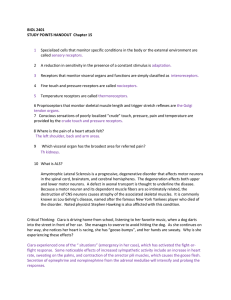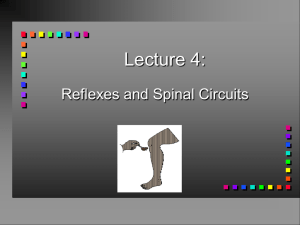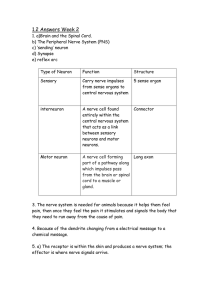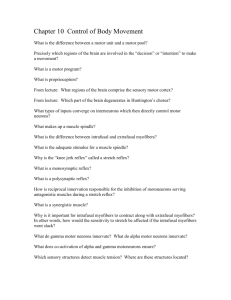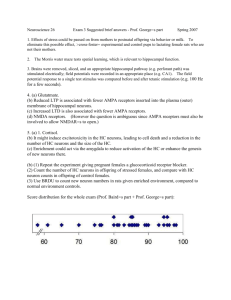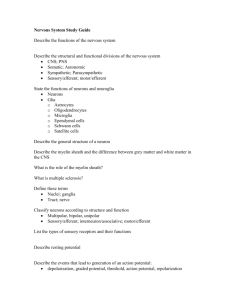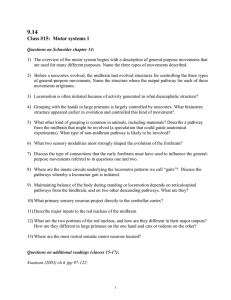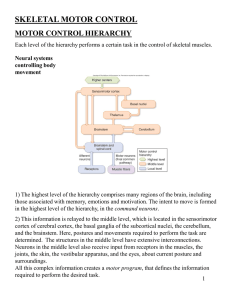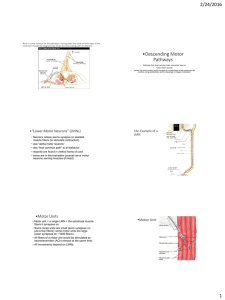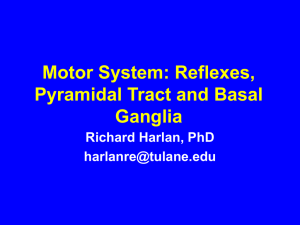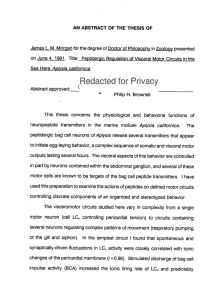Chapter 10 Quantitative and Thought Questions 10.1 None. The
advertisement
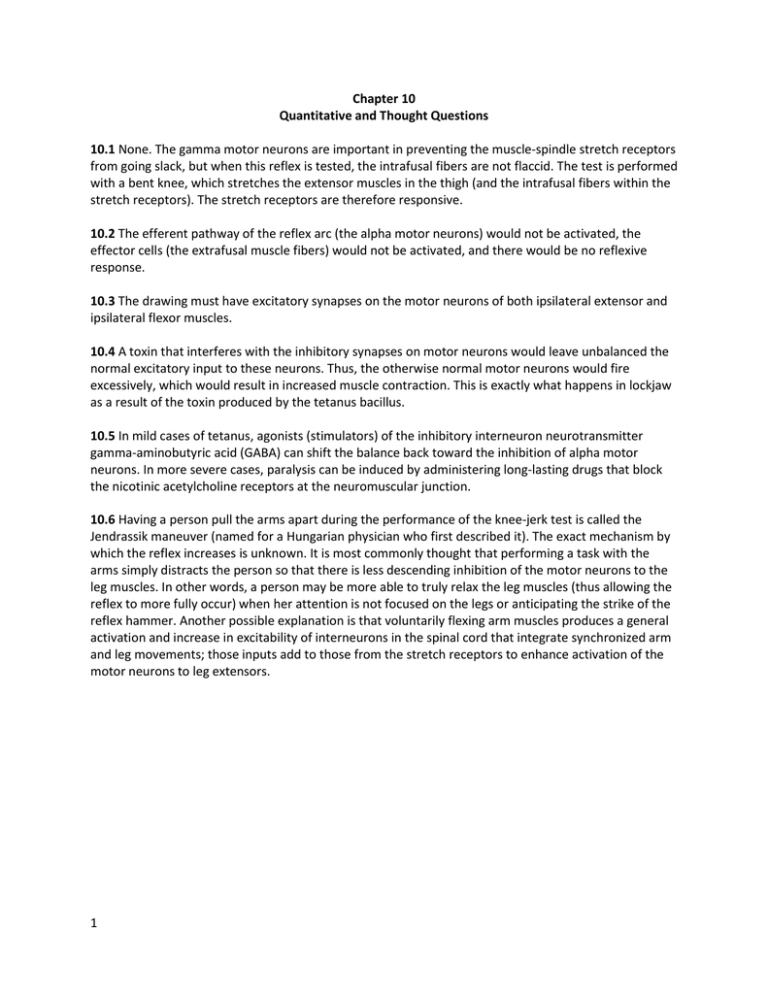
Chapter 10 Quantitative and Thought Questions 10.1 None. The gamma motor neurons are important in preventing the muscle-spindle stretch receptors from going slack, but when this reflex is tested, the intrafusal fibers are not flaccid. The test is performed with a bent knee, which stretches the extensor muscles in the thigh (and the intrafusal fibers within the stretch receptors). The stretch receptors are therefore responsive. 10.2 The efferent pathway of the reflex arc (the alpha motor neurons) would not be activated, the effector cells (the extrafusal muscle fibers) would not be activated, and there would be no reflexive response. 10.3 The drawing must have excitatory synapses on the motor neurons of both ipsilateral extensor and ipsilateral flexor muscles. 10.4 A toxin that interferes with the inhibitory synapses on motor neurons would leave unbalanced the normal excitatory input to these neurons. Thus, the otherwise normal motor neurons would fire excessively, which would result in increased muscle contraction. This is exactly what happens in lockjaw as a result of the toxin produced by the tetanus bacillus. 10.5 In mild cases of tetanus, agonists (stimulators) of the inhibitory interneuron neurotransmitter gamma-aminobutyric acid (GABA) can shift the balance back toward the inhibition of alpha motor neurons. In more severe cases, paralysis can be induced by administering long-lasting drugs that block the nicotinic acetylcholine receptors at the neuromuscular junction. 10.6 Having a person pull the arms apart during the performance of the knee-jerk test is called the Jendrassik maneuver (named for a Hungarian physician who first described it). The exact mechanism by which the reflex increases is unknown. It is most commonly thought that performing a task with the arms simply distracts the person so that there is less descending inhibition of the motor neurons to the leg muscles. In other words, a person may be more able to truly relax the leg muscles (thus allowing the reflex to more fully occur) when her attention is not focused on the legs or anticipating the strike of the reflex hammer. Another possible explanation is that voluntarily flexing arm muscles produces a general activation and increase in excitability of interneurons in the spinal cord that integrate synchronized arm and leg movements; those inputs add to those from the stretch receptors to enhance activation of the motor neurons to leg extensors. 1

